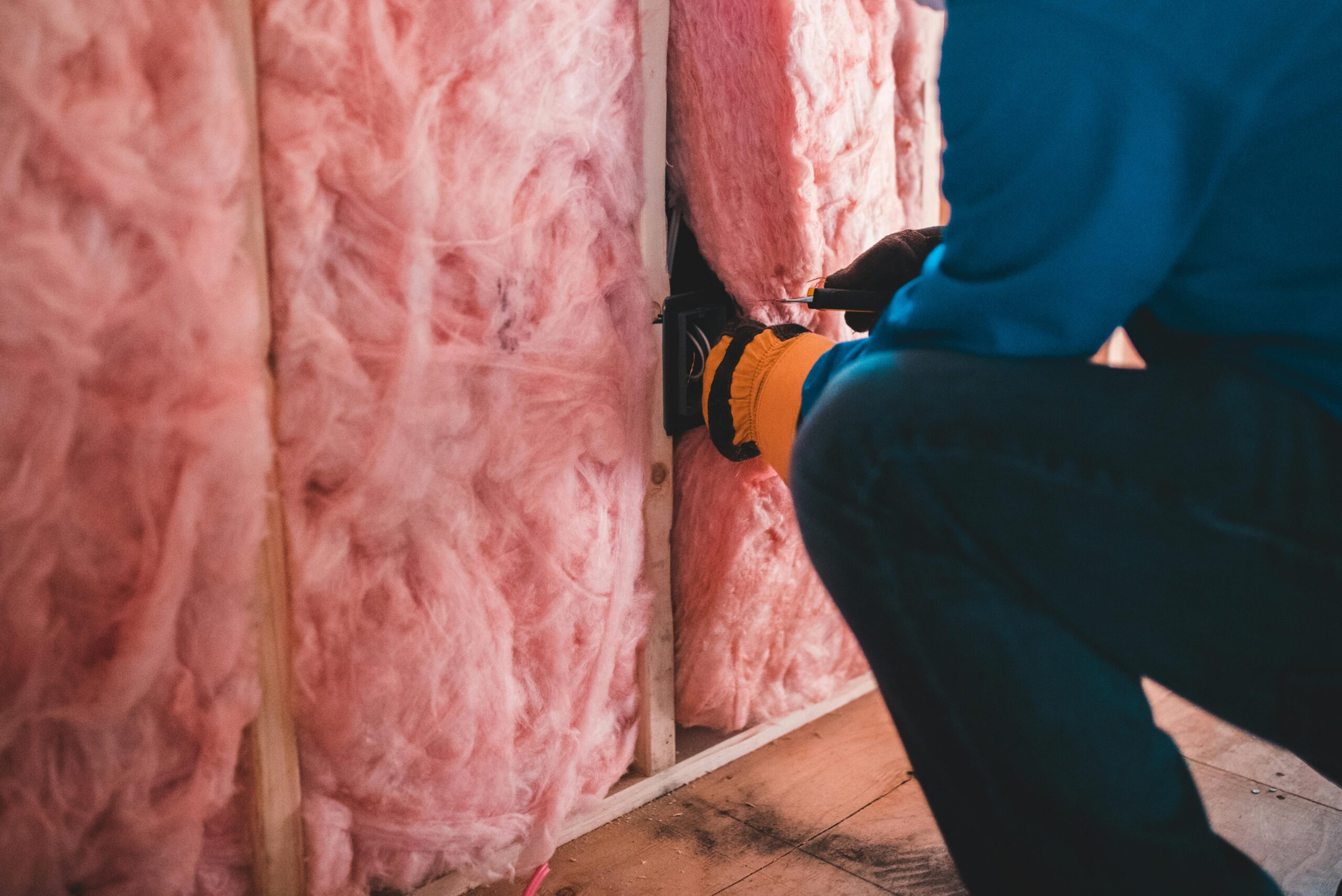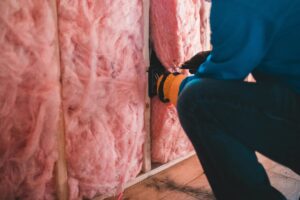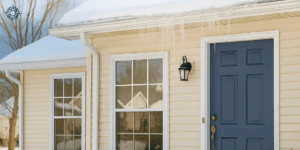90% of Homes Are Under-Insulated—Is Yours One of Them?
According to ENERGY STAR, roughly 90% of U.S. homes are under-insulated. That means in most households, heat and money are literally escaping through attics, walls, and floors every day. If your home feels drafty in winter or overly warm upstairs in summer, inadequate insulation may be to blame.
In a state like Minnesota—where winter lows routinely plunge below zero—proper insulation isn’t a luxury; it’s a necessity. Without enough resistance to heat flow, your furnace works overtime, driving up utility bills and wearing out faster.
The secret to efficient insulation lies in understanding a simple but powerful concept: R-value. Whether you’re planning an attic upgrade or replacing old wall insulation, knowing how R-values work will help you choose the best material for your home and climate. In this guide, we’ll explain what R-value really means, how Minnesota’s unique climate affects your insulation needs, and which materials offer the best performance for your investment.
What Is R-Value? The Simple Science Behind Insulation Performance

So, what is R-value exactly? In short, it’s a measure of how well a material resists the flow of heat. The “R” stands for “resistance.” The higher the R-value, the greater the insulating power.
Think of insulation as a thermal blanket for your home. When cold air presses against your walls or attic, insulation slows the transfer of heat from inside to outside (and vice versa). R-value takes into account three types of heat movement:
- Conduction: Direct heat transfer through solid materials (like wall studs or drywall).
- Convection: Heat movement through air pockets or gaps.
- Radiation: Heat emitted from warm surfaces to cooler ones.
Different insulation materials have different R-values per inch of thickness:
- Fiberglass insulation R-value: around R-2.9 to R-3.8 per inch.
- Spray foam R-value: typically R-6.0 to R-7.0 per inch, depending on whether it’s open- or closed-cell.
- Cellulose insulation: R-3.2 to R-3.8 per inch.
- Rigid foam board: varies from R-4.0 to R-6.5 per inch.
- Rockwool (mineral wool): about R-3.3 to R-4.2 per inch.
The goal is to achieve the right total R-value for each area of your home by combining material thickness and quality of installation.
Minnesota’s Climate Zone and the Ideal R-Values for Homes
Minnesota falls primarily into Climate Zones 6 and 7, two of the coldest regions defined by the U.S. Department of Energy. That means homes here need higher R-values than those in milder states.
In these zones, about 25–35% of heat loss typically occurs through the roof, followed by walls, floors, and basement foundations. Even if your furnace is efficient, heat will escape quickly if insulation levels are below code recommendations.
For most Minnesota homes, the DOE recommends:
- Attic: R-49 to R-60
- Walls: R-20 to R-25 (or higher for newer builds)
- Floors above unheated spaces: R-25 to R-30
- Basement walls: R-10 to R-15 (interior)
Older homes—especially those built before 1990—often have just half of these recommended levels. Upgrading insulation is one of the most cost-effective ways to reduce energy use and improve comfort in every season.
Types of Insulation Materials and How They Compare
1. Fiberglass Insulation
The most common and budget-friendly option, fiberglass comes in batts or loose-fill form. It’s made from fine glass fibers that trap air, slowing heat transfer.
- Typical fiberglass R-value: R-3.0 per inch
- Ideal for: Attics, walls, and floors
- Pros: Affordable, noncombustible, widely available
- Cons: Loses performance if compressed or damp
Regular inspection is key; moisture or compression can lower its R-value by 10–20%.
2. Spray Foam Insulation
Spray foam expands upon application, sealing cracks and gaps to form an airtight barrier.
- Typical spray foam R-value: R-6.0 to R-7.0 per inch (closed-cell)
- Ideal for: Rim joists, attics, crawl spaces, and irregular surfaces
- Pros: Excellent air sealing, high moisture resistance, adds structural strength
- Cons: Higher upfront cost
Although expensive initially, its superior performance can reduce heating and cooling costs by up to 20%, making it a strong long-term investment.
3. Cellulose Insulation
Made from recycled paper products, cellulose is treated with fire retardants and blown into cavities.
- R-value per inch: R-3.2 to R-3.8
- Ideal for: Attics and existing wall retrofits
- Pros: Eco-friendly, good soundproofing, fills irregular spaces well
- Cons: Can settle over time, reducing effectiveness
Cellulose performs well in cold climates if kept dry and properly installed.
4. Rigid Foam Board
Rigid insulation panels—often made from polystyrene or polyisocyanurate—are used on foundations, walls, and under siding.
- R-value per inch: R-4.0 to R-6.5
- Ideal for: Exterior walls, basement insulation, and under-slab applications
- Pros: High moisture resistance, continuous thermal barrier
- Cons: Must be sealed at joints to prevent air leaks
Rigid foam adds strength and reduces thermal bridging where studs conduct heat.
5. Rockwool (Mineral Wool)
Rockwool, or mineral wool, is made from spun basalt rock fibers.
- R-value per inch: R-3.3 to R-4.2
- Ideal for: Walls, attics, and fire-rated assemblies
- Pros: Excellent fire resistance, soundproofing, water repellence
- Cons: Slightly higher cost and heavier than fiberglass
Rockwool’s durability makes it ideal for homeowners seeking low-maintenance, long-term performance in moisture-prone areas like basements.
Comparing Performance and Cost: Finding the Best Fit
When deciding on the best insulation R-value for your home, balance is key. The most expensive product isn’t always necessary everywhere. For example, spray foam might be ideal in hard-to-reach corners or rim joists, while fiberglass or cellulose works perfectly fine in large attic areas.
Approximate Cost per Square Foot Installed:
- Fiberglass: $1.00–$2.00
- Cellulose: $1.50–$2.75
- Spray Foam: $3.00–$6.00
- Rigid Foam Board: $2.00–$4.00
- Rockwool: $1.80–$3.00
If you’re upgrading insulation in stages, prioritize the attic first—that’s where the greatest heat loss occurs. Then address walls, rim joists, and floors above garages or crawl spaces.
Mixing insulation types is common. For example, you might combine spray foam around air leaks and fiberglass batts elsewhere to balance cost and performance.
Why a Home Energy Audit Is the Smart First Step

Before adding new insulation, it’s wise to understand where your home is losing energy. A home energy audit provides this clarity.
Compass Exteriors offers a comprehensive Home Energy Audit for Minnesota Homeowners.







